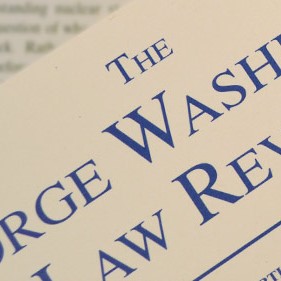Stephen E. Sachs · November 2012
80 GEO. WASH. L. REV. 1813 (2012)
The Constitution is often said to leave important questions unanswered. These include, for example, the existence of a congressional contempt power or an executive removal power, the role of stare decisis, and the scope of state sovereign immunity. Bereft of clear text, many scholars have sought answers to such questions in Founding-era history. But why should the historical answers be valid today, if they were never codified in the Constitution’s text?
This Article describes a category of legal rules that weren’t adopted in the text, expressly or implicitly, but which nonetheless have continuing legal force under the written Constitution. These are constitutional “backdrops”: rules of law that aren’t derivable from the text, but are left unaltered by the text, and are in fact protected by the text from various kinds of legal change. These rules may have been incorporated by reference, they may have been insulated from change by the usual political actors, or they may have been preserved as “defeaters” for the Constitution’s defeasible language. In each case, the text requires that the rules be given force, even though it doesn’t supply their content.
Backdrops are not only a legitimate category of legal rules, but a surprisingly important part of our legal system. Moreover, recognizing backdrops as a category may help shed light on otherwise insoluble disputes.

